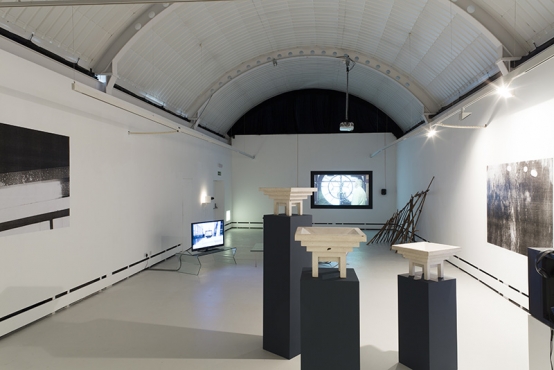Jackie Chettur currently works with text, photography and performance to uncover the ways that we imagine and remember spaces. For Recollect she presents new work exploring the physical space of the house as a metaphor for the emotionally claustrophobic relationships in the book Ethan Frome, by Edith Wharton. By selecting sections of text and printing them as new titles on collectable editions of the book, Chettur reframes this widely-read book. A stereoscope gives the trompe l’oeil image of the porch of the Frome house, a mundane space that becomes pivotal as the narrative unfolds. Both pieces use old technologies (stereoscopes and the printing press) to present a contemporary reading of the text, written in 1911.
Jackie Chettur also has a studio at Wysing, click here for more information
Phil Coy presents his work Façade; for the first time shown as part of the set for the film of the same name. As the title suggests, the work looks at the construction of reality and the deconstruction of built space and language. By showing the mechanisms of television: the make-up room, the studio, the green screen and the auto-cue, Coy demonstrates how even simple experiences are layered with visual and technical tricks. He uses archival footage and the language of architectural ‘walk-throughs’ to explore some aspects of contemporary architecture, including the connotations of power associated with the use of glass in corporate architecture. Working with a production film crew and architectural visualisation specialists Miller Hare, Façade's production process implements the tools and hierarchical systems associated with corporate media production in order to reveal the constituent parts of that system. The film’s narrator, television presenter Julia Somerville, repeats the word façade and gives its definition, adding a layer of irony to the way that the film builds up and breaks down the appearances of its characters.
